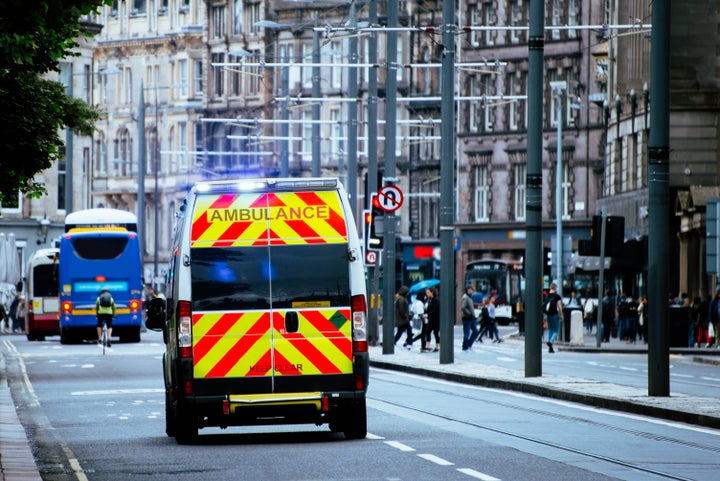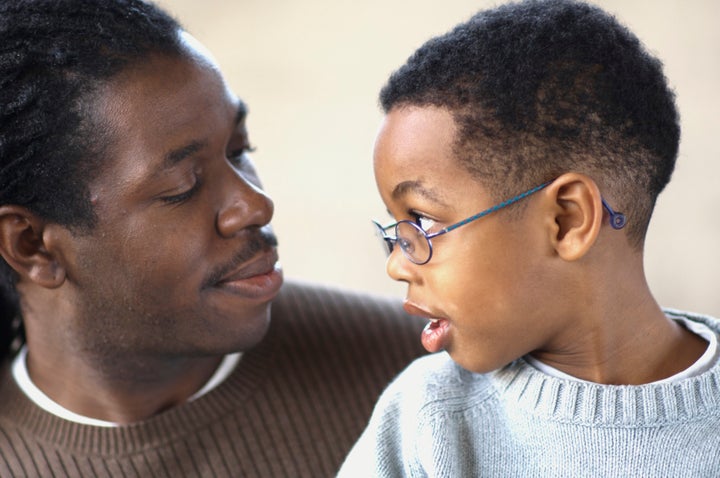Recent terrorist attacks have horrified us all. The current threat level for terrorism in the UK is severe, which means an attack is judged ‘highly likely’ by the Joint Terrorism Analysis Centre.
Though terrorism is intended to create fear and anxiety, in reality we continue to go about our daily lives and the chance of our families being caught up in a terrorist attack remain extremely slim. But we still need to have conversations with our children - about the “what ifs”.
What should they do if a terrorist attack happened in their school, on their street or travel route and how would they stay safe?

Scotland Yard has advised children in the UK need to be taught how to deal with a terrorist attack, in a similar way to how generations have learnt about ‘stranger danger’.
“When I was at school, everybody used to talk about ‘stranger danger’, that was the sort of buzz phrase and it’s still a thing I remember today,” said assistant deputy commissioner Lucy D’Orsi, the National Police Chief’s Council spokesperson for protective security.
“For me that messaging needs to be to children as well as to the broader public. If we take a lot of our crowded places, and some of the places that you will work in. We know that at key times they are a hub that attracts a lot of young people to go to those places.”
In short, our children need to have practical information about what to do if they were involved in a terrorist attack, without scaremongering and with lots of reassurance that this will probably never happen, but why it’s still important to know.

Talking About Terrorism
The advice from children’s charities and psychologists is that talking about terrorism is always better than avoiding the issue, especially if children are asking questions. Although it is important to be honest, there is no need for unnecessary detail and you should aim to be calm and reassuring.
Be aware that your children may know more than you expect, or have confused and alarming ideas they are struggling to make sense of.
Dr Megan Moreno heads the Social Media and Adolescent Health Research Team at Seattle Children’s Hospital and recently published How to Talk to Your Children About Tragedies in the News. She points out: “There have been a lot of changes in how we receive news and the types of news we receive, which has impacted the information that kids are exposed to.
“Families used to sit together to watch the evening news, which was generated by professional journalists and filtered carefully. Now we receive news on our phones, and there are no filters.
“You may log onto Facebook to look at cute cats or funny videos and then see a tragic news story. This has impacted how adults interact with news, and it’s important to step back and think about kids as well.”
Listen carefully to children’s worries and fears, ask what they know and talk honestly about the situation.
Emphasise how rare terrorist attacks are; that horrific though they are they are on the news because they are not usual.
Point out the heroes and helpers, so children can see a positive perspective of a traumatic event. Explain that there are people working behind the scenes to prevent attacks happening.
Reassure children that they are safe at home and at school and give them lots of hugs.
Dr Sarah Davidson, Head of Psychosocial at British Red Cross said: “The key, when teaching children about terrorist attacks, is not going into too much detail. You want to keep it low key and offer a simple, direct explanation that is age appropriate. Avoid graphic detail and keep it as simple as possible.
“Like adults, children are fundamentally resilient. Reassure them that their home and school are safe places, and that these events, while tragic, rarely happen, and are unlikely to directly affect them.”

Practical Advice: How To Stay Safe
Talk to your children about how they would stay safe in the event of a terrorist attack and how they could follow the government advice of ‘run, hide, tell’. Explain that you would always protect and take care of them, and so would their teachers and other grown-ups.
Run
Talk to your children about how they would escape if they could. What would be the quickest and safest route in different familiar places like their school or the train station? Could they get there without exposing themselves to danger? Explain how they would leave very quickly and calmly.
Hide
Talk to children about how they would hide, if they couldn’t run to escape. Talk about good hiding places, like behind strong walls and not near windows or doors, and how they would stay very quiet.
Tell
Do your children know about calling 999? Only if it’s safe to talk and they have a mobile phone, explain how they would give their location and what they’ve seen.
Parents: What We’ve Done
“My daughter was very upset by the Ariana Grande concert attack in Manchester. She’s 12, so a similar age to a lot of the children there. She wanted to know why someone would do that? All I could say was that people sometimes did terrible things, but that most people are kind and care about others. I’ve stressed constantly that the chance of something so awful happening to her is tiny, but we have watched the NSPCC run, hide, tell video together.” Natasha
“I asked the headteacher at the children’s primary school if they had a plan if, God forbid, the school was attacked. She was very reassuring and shortly afterwards we all received a letter explaining what measures the school had in place and advice on how to talk to our children about terrorism. I’m pleased that the school gates are locked during the school day.” Laura
“It’s explaining the unexplainable, isn’t it? That’s what so difficult. We’ve talked about what we’d each do in different places. I’ve aimed to make it quite light because my oldest is eight. We talked about how my mum, who’s from New Zealand, used to have a home drill for earthquakes and so what our home plan would be and where we would all hide.” Donna